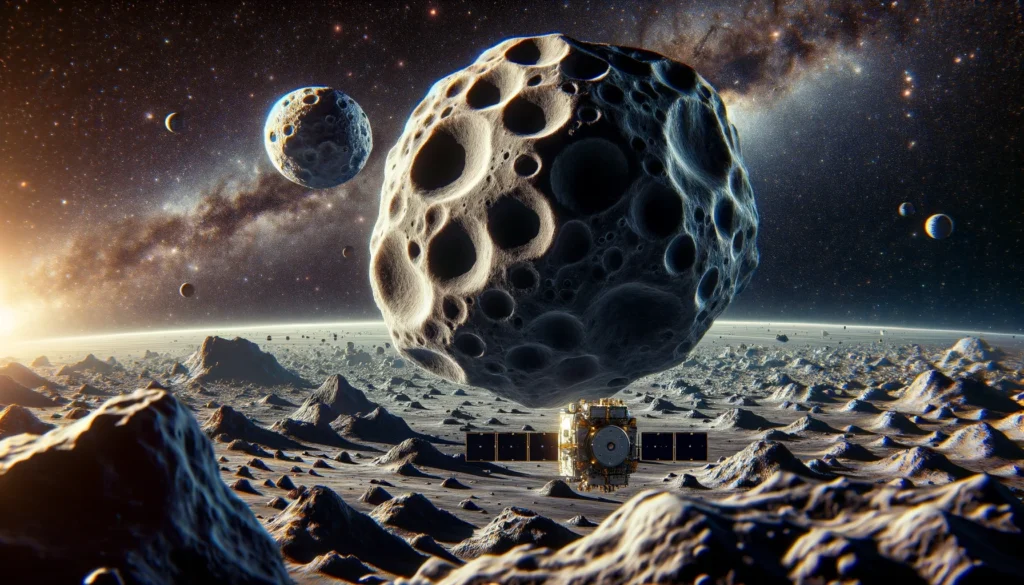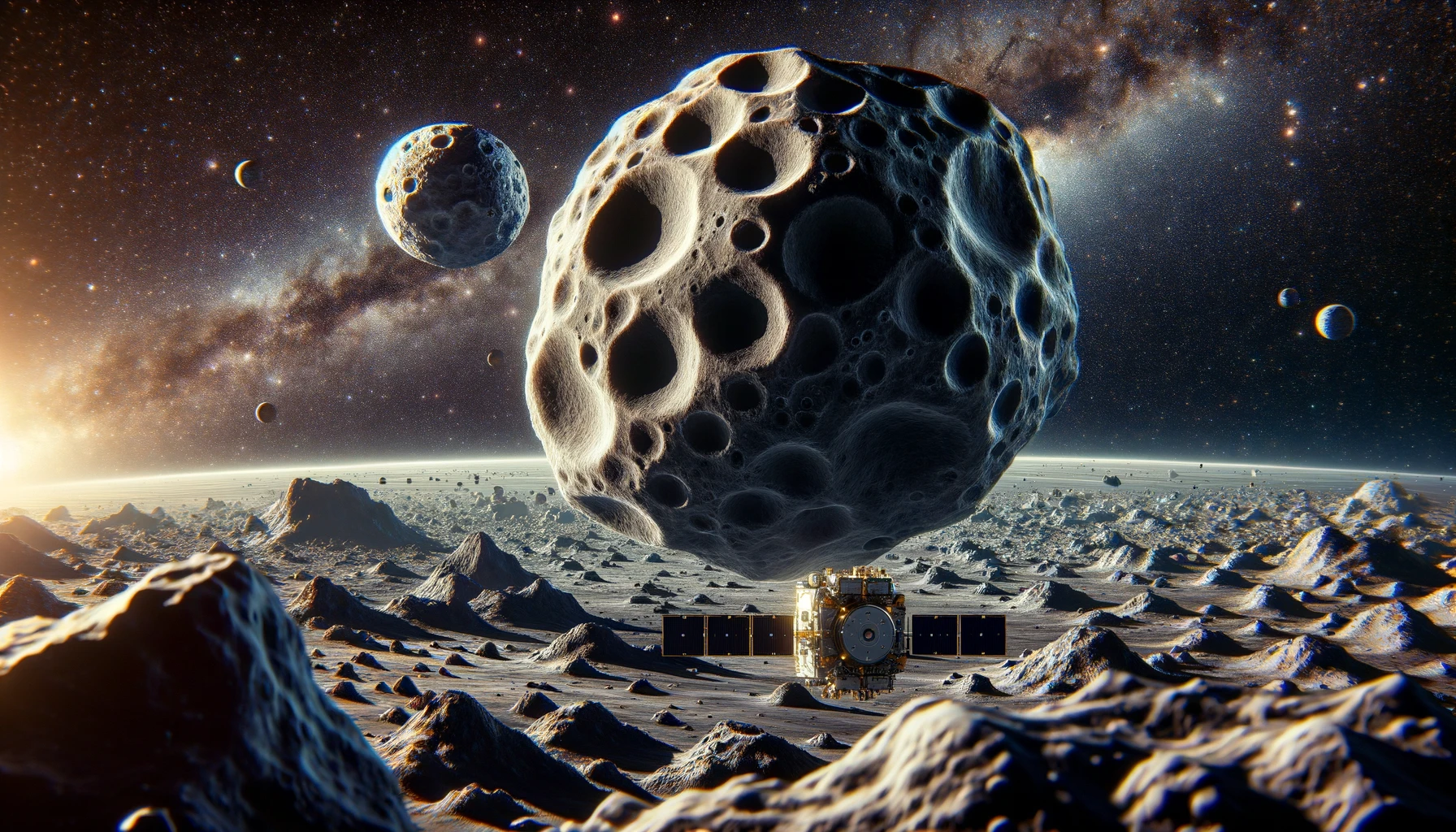“Asteroid Selam, NASA Lucy mission, near-Earth asteroids, space exploration, cosmic toddler, asteroid dynamics, solar system formation, binary asteroids, asteroid dating methods, celestial mechanics”
“Discover the fascinating story of asteroid Selam, a ‘cosmic toddler’ identified by NASA’s Lucy spacecraft. Learn how scientists used innovative methods to determine its age, and explore the implications of this discovery for our understanding of solar system dynamics and asteroid evolution.”

In the vast and often mystifying expanse of our solar system, new discoveries continue to capture the imagination of astronomers and space enthusiasts alike. One such intriguing discovery was made by NASA’s Lucy spacecraft in November when it encountered the near-Earth asteroid Dinkinesh and its newly identified companion, Selam. This finding has not only added to our knowledge of celestial mechanics but has also presented a unique glimpse into the dynamic processes shaping our cosmic neighborhood.
Introduction to Selam: A Recent Split from Dinkinesh
During its mission, Lucy observed that Dinkinesh was not alone; it was accompanied by a smaller moonlet that scientists have named Selam. Further analysis revealed a startling fact: Selam had separated from Dinkinesh relatively recently, about 2 to 3 million years ago. In the context of the solar system’s age, which spans over 4.5 billion years, Selam is indeed a toddler. This recent formation makes Selam an exceptional subject for studying the evolutionary processes of asteroids.
Importance of Dating Asteroids Selam
Understanding the age of asteroids like Selam is crucial for comprehending the broader narrative of the solar system. Colby Merrill, a doctoral student at Cornell University involved in the study, emphasized the significance of these findings. He noted that knowing when asteroids formed helps us piece together the timeline and mechanics of solar system development. Selam, with its youthful age, provides a rare perspective into the more recent events that have occurred in our solar neighborhood.
Innovative Methodology for Age Determination
Traditionally, the age of asteroids has been estimated by counting the impact craters on their surfaces—the more craters, the older the asteroid. However, Merrill and his team adopted a different approach for Selam. They constructed a model to simulate how Selam could have originated from Dinkinesh under various conditions. By analyzing the dynamics of how Selam orbits Dinkinesh and simulating numerous scenarios, they were able to narrow down Selam’s age to about 2 to 3 million years.
The simulations involved over a million different scenarios, with the median result pointing to an age of about 3 million years, and the most common findings suggesting closer to 2 million years. These results indicate that Selam could be even younger than Lucy, the human ancestor after whom the Lucy spacecraft is named.
Broader Implications for Asteroid Studies
The method developed to date Selam has broader implications for the study of other binary asteroid systems. Dinkinesh and Selam are part of an estimated 15 percent of near-Earth asteroids that have binary partners. Merrill suggested that understanding the age of one such system could enhance our knowledge of these binary interactions and their role in the evolutionary history of the solar system.
Lucy’s Ongoing Mission
The discovery of Selam is just one part of Lucy’s extensive mission to explore the asteroids in our solar system. The spacecraft’s journey will continue as it is set to visit asteroid 52246 Donaldjohanson in 2025, located between Mars and Jupiter. From 2027 to 2033, Lucy will also explore eight Trojan asteroids, which share Jupiter’s orbit around the Sun. These missions promise to further our understanding of the primordial materials that helped shape the planets and offer insights into the origins of our solar system.
Conclusion
The findings from the Lucy mission and the study of asteroid Selam have opened a new chapter in the field of astronomy. By advancing our understanding of asteroid dynamics and ages, scientists are able to piece together the complex puzzle of our solar system’s history. As Lucy continues its cosmic voyage, each asteroid it encounters will contribute valuable data, helping to illuminate the dark corners of our celestial neighborhood and enrich our understanding of the universe.
Read More-
